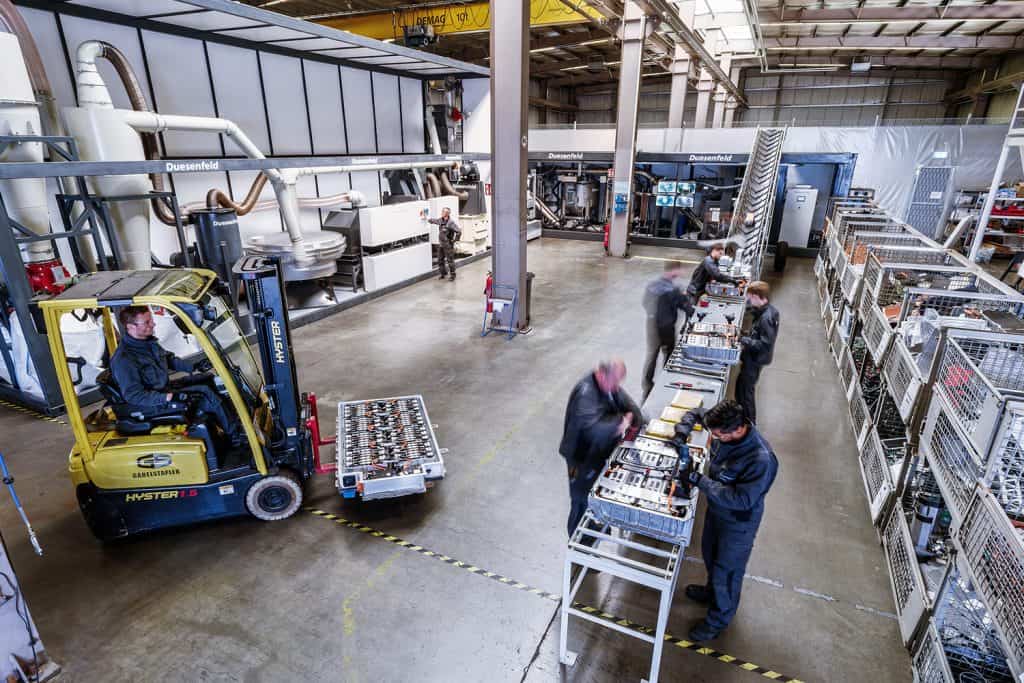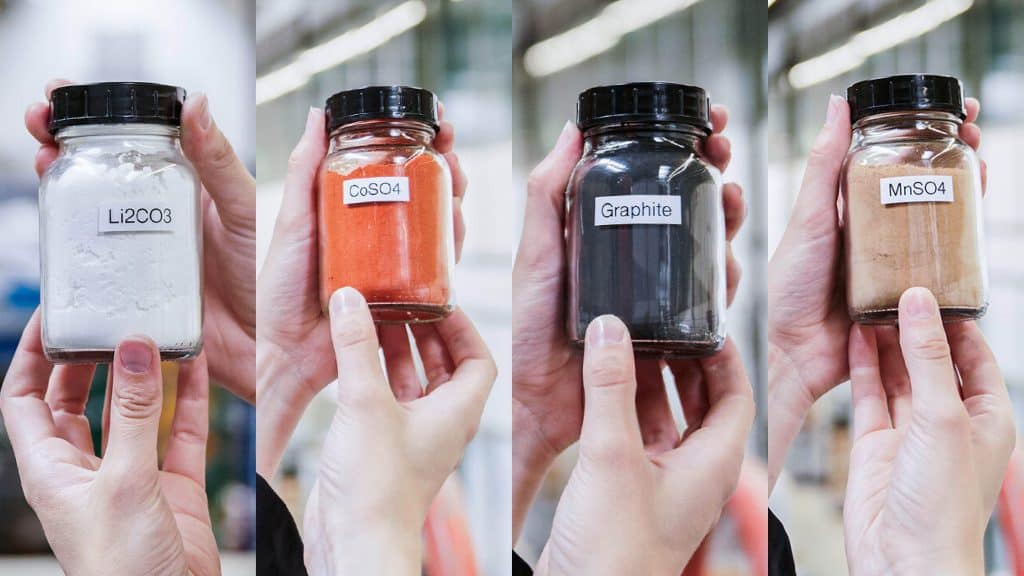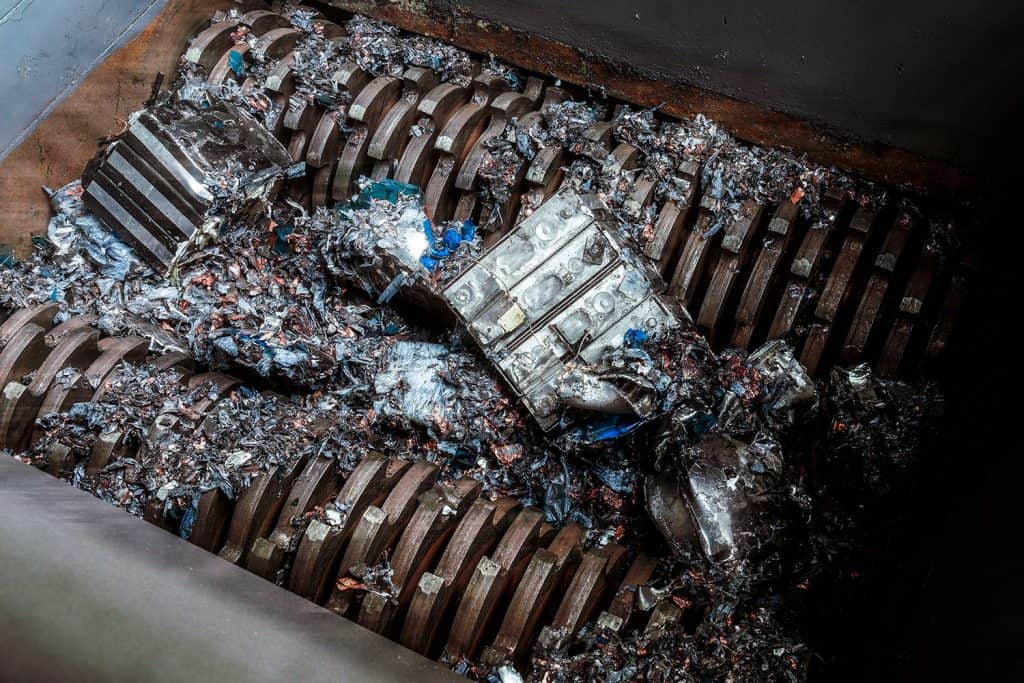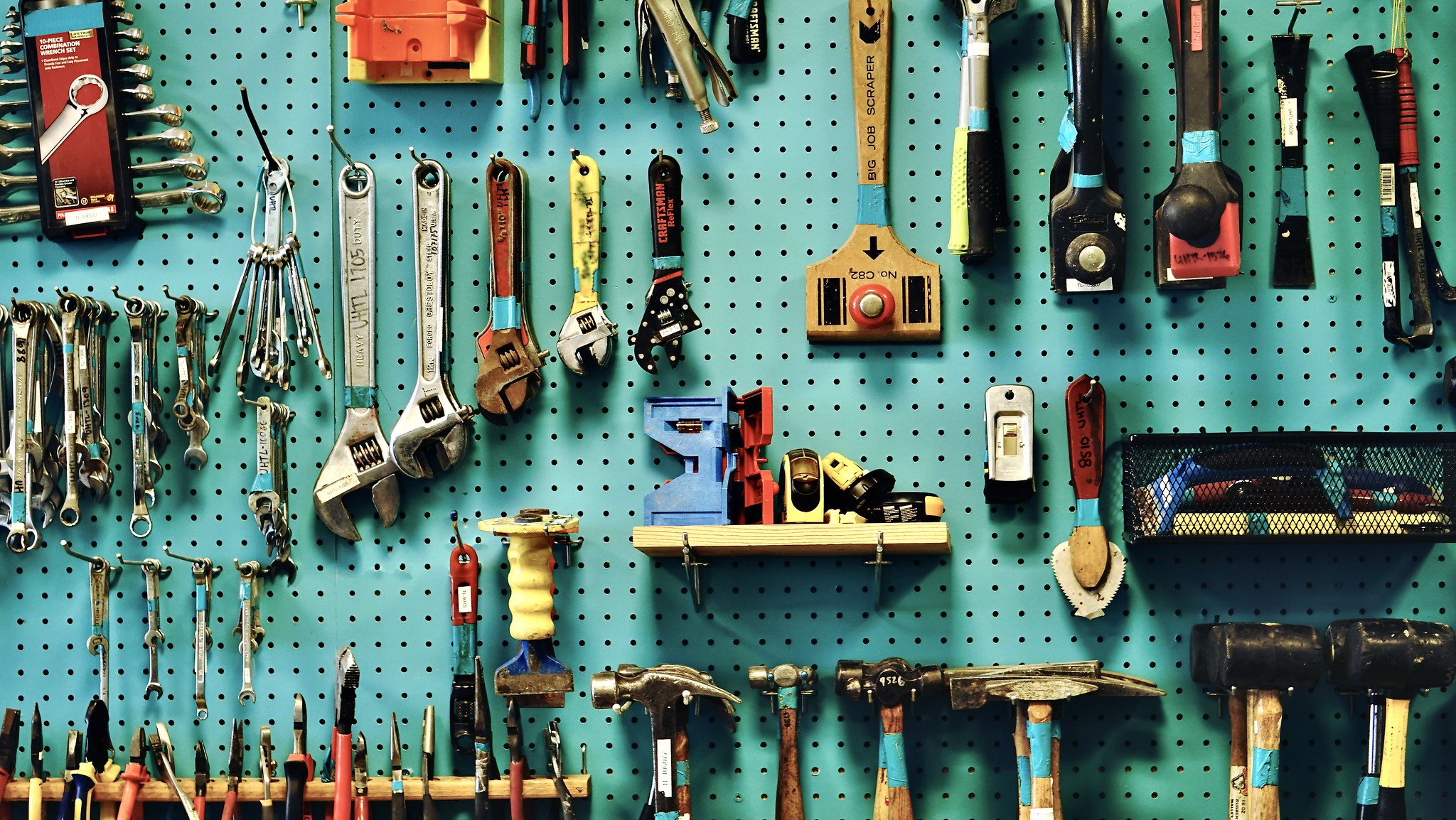Each wooden box is as big as a grand piano. Employees in gray T-shirts open the strong hinges, remove safety foils and loosen the fixings. Now they can lift the heavy battery system out with a crane and carefully maneuver it onto the forklift.
Even this herculean first step at the Duesenfeld battery recycling facility in Wendeburg, Germany illustrates the unique challenges of recycling electric vehicle (EV) batteries. They are bulky, weigh hundreds of kilograms and must be handled with great care. Damaging them can lead to dangerous fires.
And yet, there has never been a more critical time to make it work. The inside of an EV battery is a treasure trove of materials. The outer components — copper cables, aluminum, steel or plastics from the cases — can be easily recycled. But “the deeper in you go, the more difficult it becomes,” says Andreas Bittner of Fraunhofer Institute for Silicate Research. That’s where the most valuable and critical raw materials sit: in the modules and cells.
The sheer quantity of materials in these components is staggering. The battery of one mid-range electric car alone contains about six kilograms of lithium, ten kilograms of manganese, 11 kilos of cobalt, 32 of nickel and a whopping 50 kilograms of graphite. These raw materials are not only finite, with demand rising by the day, but their extraction also comes at an incredible human and environmental cost. With the climate emergency depending on a transition to electric vehicles, they are materials the world simply cannot afford to waste.
And yet, the recycling technology for these batteries has lagged. With EVs still relatively new to the roads, most batteries are still running — those that are already expended are enjoying a brief second life as energy storage facilities for operations like solar farms. But even that second life has a limit, and the tsunami of burnt out batteries is coming — and fast.
That’s why Bittner and his team started AutoBatRec2020, a collaborative research project that brings together recyclers, battery manufacturers, scientists and carmakers to develop an end-of-life cycle that ensures EV battery materials don’t get wasted. “It is imperative that these [critical raw materials] are recovered and recycled,” says Bittner.
A glimpse of that future is Duesenfeld, a small private company founded in 2019. Duesenfeld is proving that it is more than possible by recovering, according to company records, over 90 percent of the raw materials in each used battery they recycle.
This number is more critical than it might seem. While other forms of battery recycling have existed for some time, those techniques burn the batteries in the process, destroying many of the critical raw materials. Duesenfeld’s technique, which involves substantial separation, retains the materials at a grade that allows them to be reused in new batteries.

“Why mine more and more raw materials in faraway countries under questionable conditions?” asks Julius Schumacher, deputy production manager at Duesenfeld.
Behind him, a forklift moves the battery system over to where its remaining energy will be unloaded. This is mandatory for safety reasons, but it also contributes to the sustainability of the whole operation. Schumacher points to a screen with rows of numbers running up and down. They show how much energy is gained by discharging; how much is drawn from the grid and how much is fed in. “Often, the discharge current provides the majority of the energy needed,” he says.
Low energy consumption is one of the features of the process. Other recyclers melt the cells and modules in a shaft furnace at high temperatures. That produces large amounts of CO2. “In comparison, we save 4.8 tons of CO2 per ton of recycled batteries,” says Schumacher, noting the saving is even higher, at 8.1 tons, compared to the mining of the raw materials.
After unloading, workers disassemble the battery systems. Metals and cables from the cases are recycled by a conventional recycling company. Duesenfeld shreds modules and cells using a special process that excludes oxygen to avoid toxic gases from forming. The result is a granulate soaked in electrolyte, which is dried and separated into the raw materials. Iron, copper and aluminum go the way of conventional recycling. But the cobalt, nickel, lithium, manganese and graphite are saved for reuse in new batteries after chemical processing.

Duesenfeld opened the plant 2019. In 2020, it employed 20 workers on one shift. Today, 43 employees work in three shifts. This year, the managing director expects to recycle 2,000 tons of batteries — about 8,000 cars-worth — and the company just rented another building to expand their operation in 2022.
While their current volume is small, Duesenfeld expects to make a profit in 2021. Most of what the company earns comes from disposal fees. Second comes the re-sale of raw materials, a ratio that could change at any time with rising values.
Perhaps just as important, Duesenfeld is setting a high bar for other recycling initiatives. Chemical giant BASF and Porsche have announced a pilot plant for recycling discarded lithium-ion batteries, and Ford and Volkswagen AG have formed partnerships with lithium-ion battery recyclers in the last few years. Duesenfeld has proven that new initiatives can do better than status quo.
Duesenfeld’s timing couldn’t be better. According to a study by the Ökoinstitut (Ecoinstitute) Freiburg, demand for recycled products is only set to rise. By 2050, the institute estimates the demand for lithium for electromobility worldwide at 600,000 tons per year — 7.5 times the global production in 2020.
At the same time, the number of discarded batteries will increase. In Europe, the market share of battery-powered electric vehicles doubled year-on-year in the second quarter of 2021. Add to this a share of hybrid vehicles of almost 20 percent, which also require a powerful battery.

In addition, the EU’s guidelines are changing, requiring a substantially higher percentage of EV battery components to be recycled. The previously prescribed quota of 50 percent is achieved with the recycling of cases and cables alone. But by 2022, cobalt, copper, nickel, lead and lithium must be recovered in such a way that they are suitable for use in the battery industry.
Bittner says that to reach the highest standard of recycling across the industry, the design of batteries must improve alongside the recycling techniques — the separation of raw materials, and even design that would allow robots to physically handle the units and participate in the recycling process. In the meantime, Duesenfeld is prepared for the new regulations, and others will follow.
“We want to create our own cycle with more than 90 percent recycling of our batteries,” says Thomas Tiedje, head of technical planning for VW. “If we produce our cathodes exclusively from recycled material, we will save more than one ton of CO2 per vehicle.”






